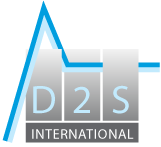Urban Track
Urban Rail Infrastructure
The URBAN TRACK integrated research project was set up to address the ‘2020 ERRAC’ vision: low life-cycle cost (LLC), high performance, modular, safe, low noise and vibration rail infrastructure systems that fit into a harmonised European market.
Contract: TIP5-CT-2006-031312
Website: www.urbantrack.eu
Acronym: URBAN TRACK
Full title: Urban Rail Infrastructure
Project Co-ordinator: D2S International, Heverlee (BE)
Starting date: September 1, 2006
Duration (in months): 48
Budget: €17,923,777.00
EC contribution: €9,998,350.00
Background
New urban rail systems (LRT, tram, metro) face destructive opposition to the installation of new tracks from residents living nearby. This often-organised resistance delays the necessary authorisations. Their arguments are about noise and vibration disturbance during construction and exploitation, reduced revenues for businesses during construction, and general quality of life concerns over things such as safety, reduced property values and neighbourhood attractiveness.
Besides these human factors, there are also a number of technical issues that increase the project cost and thus require improvement. The cost of classical urban track construction is very high, especially for embedded tram tracks, which include the complete renovation of the roadbed and, in some cases, also the sewer system. Track renewal methods are cumbersome, time consuming and often need complete closure of a section.
There is almost no standardisation within the same network. On a broader scale, there is no uniformity of functional requirements between networks, making it hard to transfer rolling stock from one network to another. Urban networks often also face internal challenges.
Investment costs and maintenance costs are generally covered by two different authorities that may have opposing interests, and prevent LCC-based decisions. This is further exacerbated by the fact that no generally accepted method exists to assess the total life-cycle cost of urban track systems.
Objectives
This four-year research project aimed at developing, testing and validating a series of innovative products that can be categorised in three classes:
-
Innovative new products and solutions: prefabricated track modules, green tram tracks, embedded metro tracks, alternative low-cost tracks for floating slab in tunnels and on gradients
-
Innovative new methods: innovative track installation methods, automated track installation, fast renewal and refurbishment methods, cost/benefit analysis method for infrastructure works, preventive and predictive maintenance methods, techniques for reducing wear in curves and turnouts
-
Harmonised reference documents: standard for rail transit track inspection and maintenance, LCC calculation method, functional performance specifications.
The products were integrated into a family of solutions within the function of the track type (metro, tram shared, tram segregated) and in function of the network’s specific needs. Validation was carried out in ten networks (each validating another type of infrastructure or solution). The evaluation was based on criteria such as operational availability and cost.
Description of work
The project aimed at developing families of innovative products, methods and standards in order to achieve greater harmonisation and safe, environmentally friendly urban track solutions at a low cost. The building blocks were integrated using the developed tools into a family of solutions within the function of the track categories concerned (metro, tram-shared, tram-segregated) and within the function of the specific needs of the network concerned (small curves, high axle loads, etc.).
Subproject (SP) 1 revolved around new products/solutions: prefabricated track modules, green LRT/tram tracks, embedded metro tracks, alternative low cost tracks for floating slab in tunnels and on gradients, maintenance-free interface between rail and street pavement for embedded tracks.
SP2 covered new methodologies for track maintenance, renewal and refurbishment: innovative track installation methods, automated track installation, fast renewal and refurbishment methods of existing tracks (LRT/tram), cost/benefit analysis method for urban rail infra works (LRT/tram), preventive and predictive maintenance for metro tracks, techniques for reducing wear in curves and turnouts (LRT/tram).
SP3 designed and implemented these solutions at selected test sites.
SP4 developed an LCC model and an associated software tool. It looked at the socio-economic cost of track construction for nearby residents and shops.
SP5 developed harmonised standards for rail transit track inspection and maintenance, as well as harmonised functional performance specifications. It should be noted that the network operators/infrastructure managers were the drivers of this project.
Results
The entire project dealt with two topics: reducing costs and harmonising specifications. This project aimed at reducing the life cycle costs by 25% by reducing the material cost by 20%, the overall installation cost by 30% and by increasing the service life by 50%.
The results are new innovative track products, systems and construction methods, as well as new innovative track maintenance methods, supported by a comprehensive LCC model and its accompanying software.
These innovative construction methods are developed in conjunction with a harmonised standard for ‘rail transit track inspection and maintenance’ and harmonised functional performance specifications. These harmonised documents promote the standardisation of track systems.
Besides these cost savings, the improved quality of the track construction methods results in reduced fatigue damage and longer service life; two factors that benefit safety. The new track systems benefit the environment through better aesthetics, controlled noise and vibrations.
